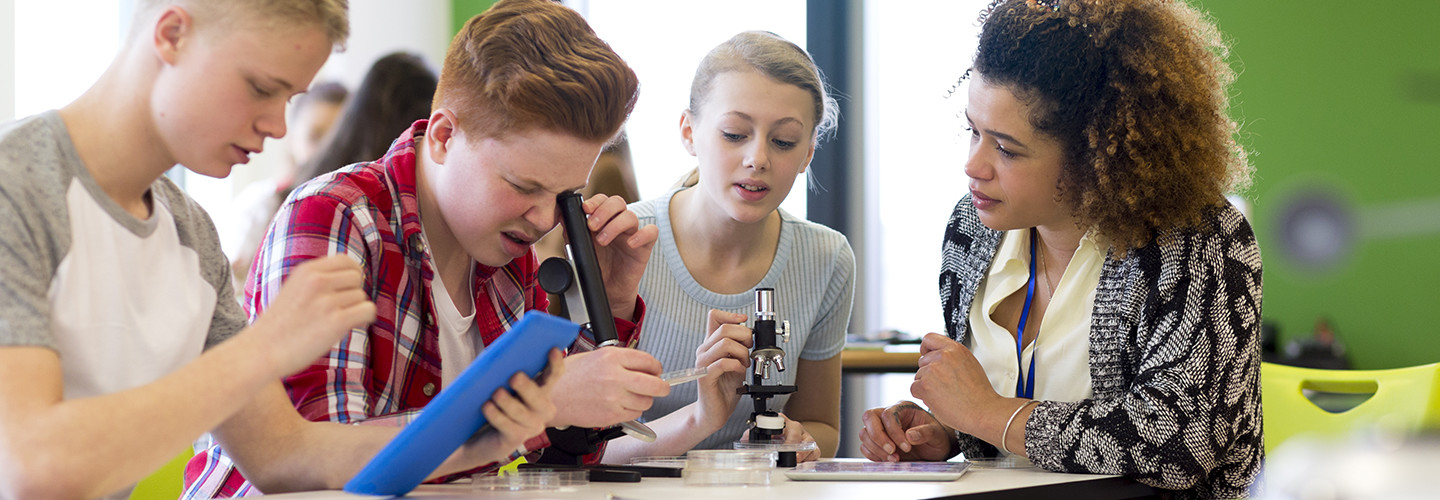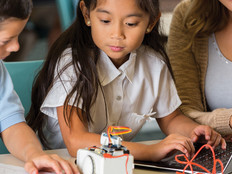STEM Learning Advances When All Students Participate
Every student has his or her own story and brings a diverse set of perspectives to school each day. Our life experiences and worldview affect how we approach and solve problems. The more voices we hear and stories we tell, the more we can learn from each other and be innovative while creating or solving problems. To increase the speed and depth of innovation, we need to engage and provide opportunities for all students to learn in meaningful ways.
Current research reports that underrepresented populations are not achieving at the same levels in science, technology, engineering and mathematics as their counterparts. According to the U.S. Bureau of Labor Statistics, professional opportunities in STEM fields are expected to grow 12.5 percent by 2022, a faster rate than non-STEM fields. Despite that, black and Latino people each make up only six percent of the STEM workforce.
As educators, we need to work hard to increase that number. It starts with engagement at the elementary level and continues until graduation.
Use STEM to Transform Learning for All Students
We often hear the term STEM or STEAM integration, which includes art. Wide-scale integration involves making something fit into the existing and traditional containers of education.
David Jakes says, “To integrate means to find a way something new can be used to do something old. To integrate means to find a way that something that could potentially create new directions, new tangents, and new patterns of behavior can become educationally compliant.”
If schools take this approach, then learning inequity continues to be a problem. How can STEM integration be viewed in a different, integral way that transforms learning for all students?
Many times, integration might look like this: Take a science standard and pair it with a math standard, make sure students use the engineering process and a technology tool in the process, and — voila — you have STEM integration. What if we stop integrating the STEM concepts into a traditional scope and sequence or curriculum and, instead, use STEM concepts to rethink classroom instruction and learning? A focus on integration takes a new idea and looks inward.
Too often, as educators, we do not address the root cause of the problem but instead react to the symptoms, thus never addressing the source of the issue. STEM programs and initiatives often become our reaction to the symptoms (low achievement, few students entering STEM fields, low motivation, etc.) instead of addressing the source of the issue (inequity in learning experiences).
When I became an administrator of a STEM magnet school, I knew we had to approach math and science instruction in a different way. Much of the nation began to shift to STEM programs and adopt a kit-based, recipe-driven approach. Our leadership and faculty wanted to ensure students were given opportunities to improve on iterations, solve local problems, choose technology tools that made sense and apply mathematical practices to real-world contexts. We realized students needed exposure to learning opportunities inside of a challenge-based framework, solving problems through an inquiry-based approach, while applying engineering practices.
Teach STEM in a Culturally Responsive Way
STEM is transformative and truly authentic when it is developed with a culturally responsive approach. Students focus their learning experiences around career and extracurricular interests. As we develop inquiry-based STEM-focused challenges, we must plan to address the differentiated needs of students so we’re reaching all students, and not just say we’re doing STEM. We must know the interests of our students and empower them to direct their own learning while teachers support and facilitate them in the process. What does this look like? When a teacher sees a student struggling with a math skill while applying it to solve a relevant problem, the teacher creates an opportunity to support the student in a small group math lesson.
The immediate response to STEM often prompts a quick inclusion of science kits or STEM programs. Science kits provide easy access to materials but can also lead to overly prescriptive processes for students, with every student creating the same product or project and replicating the same procedure. If we are going to move toward more student inquiry and creativity, we must move toward more teacher inquiry and creativity. We must create collaborative structures for teachers and students and co-create opportunities to solve meaningful problems.
Instead of attempting to fit STEM activities into existing blocks of learning, we should look at how we can deconstruct traditional content blocks and reconstruct meaningful experiences using innovative STEM practices. Differentiated student voice and choice promotes opportunities for students to choose their own paths to a solution. If teachers spot a deficit, they can use those as impromptu learning opportunities to differentiate instruction inside of this challenge-based environment.
This article is part of the "Connect IT: Bridging the Gap Between Education and Technology" series. Please join the discussion on Twitter by using the #ConnectIT hashtag.
![[title]Connect IT: Bridging the Gap Between Education and Technology [title]Connect IT: Bridging the Gap Between Education and Technology](http://www.edtechmagazine.com/k12/sites/default/files/articles/2014/05/connectit.jpg)







